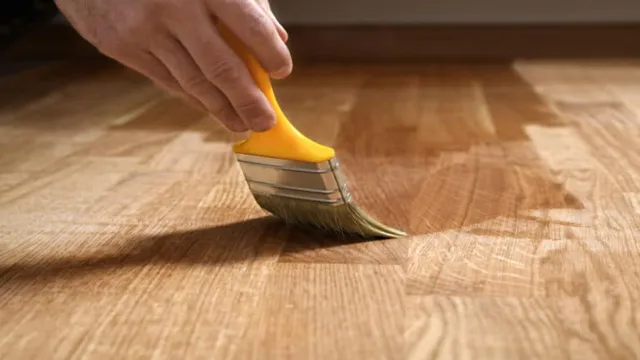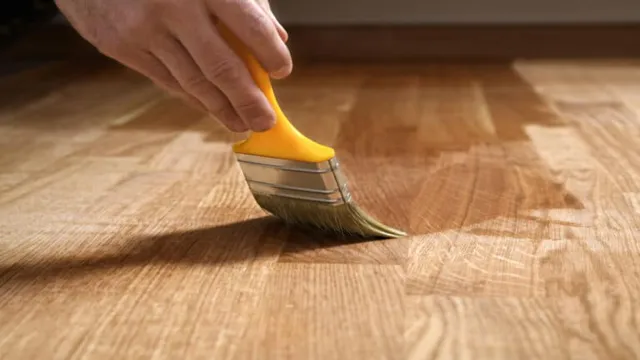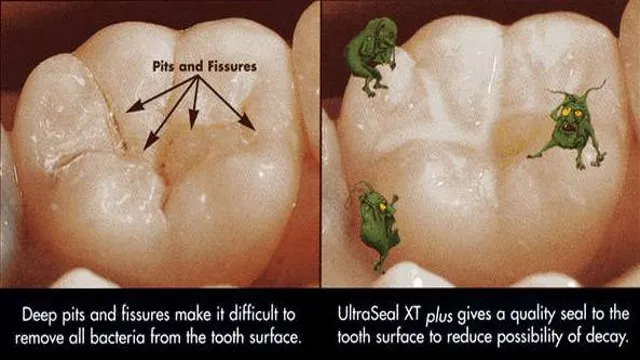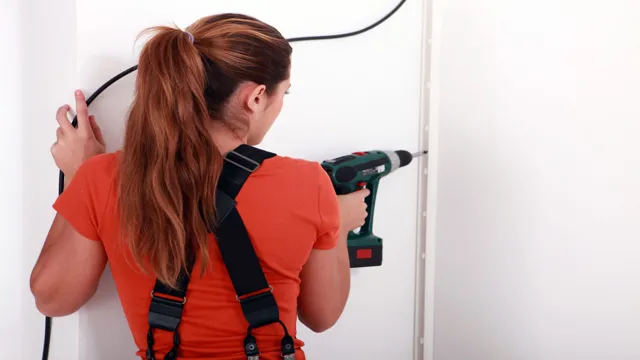What is a DWV Pipe: A Comprehensive Guide to Drain, Waste, and Vent System
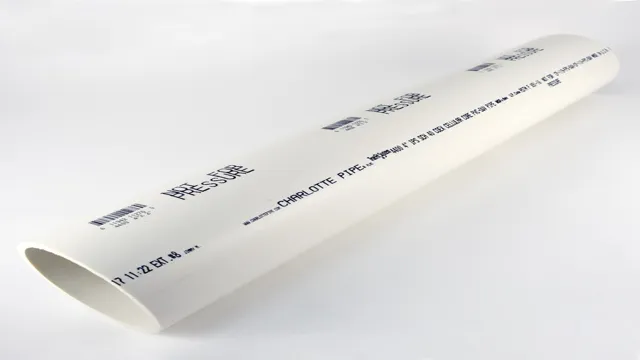
Have you ever wondered what goes on behind the walls of your home? The piping that runs through the walls and floors is an integral part of any building, and one of the most vital types of pipes you might encounter is the DWV pipe.
DWV stands for drain, waste, and vent, and these pipes are responsible for keeping your home’s drainage and sewage systems running smoothly. But what exactly is a DWV pipe? And how does it work? Let’s take a closer look.
Think of your home’s plumbing system as a network of highways, with water flowing in and out of the various rooms. The DWV pipe acts as the off-ramp, directing waste and sewage away from your home and into the public sewer system.
It is designed to be completely separate from your freshwater supply, meaning that any water that comes out of it should be considered contaminated and off-limits for consumption.
And unlike other pipes in your home, DWV pipes do not need to be pressurized; gravity alone is enough to move the waste through the pipes and into the public sewer system. So why is it so important to know about DWV pipes?
Well, without them, your home’s sewage and drainage systems could quickly become overwhelmed and lead to some pretty nasty consequences. If you’re experiencing slow drainage, gurgling sounds from your pipes, or foul odors coming from your drains, it could be a sign that your DWV pipes need some attention.
A certified plumber should be able to diagnose the issue and recommend a solution to keep everything flowing smoothly. In short, DWV pipes may not be the most glamorous part of your home’s plumbing system, but they are certainly among the most vital.
Understanding how they work and how to keep them in good working order can help keep your home’s sewage and drainage systems running smoothly and prevent any unpleasant surprises.
DWV Pipe – Definition and Purpose
If you’re shopping for plumbing pipes, you may have come across the term “DWV pipe”. So, what is a DWV pipe exactly? DWV stands for “drain-waste-vent”, which explains what this type of pipe is used for – carrying waste and wastewater away from your home.
The purpose of DWV pipes is to prevent dangerous gases and fumes from backing up into your living spaces. They also keep waste and sewage from contaminating your freshwater supply.
DWV pipes run vertically through your home, as well as horizontally along the walls and floors. They’re usually made of PVC or ABS plastic and come in a variety of sizes to accommodate different plumbing systems.
Overall, DWV pipes are essential components of any plumbing system. They help keep your home safe and hygienic by efficiently carrying wastewater away from your living spaces.
While it may not be the most glamorous aspect of your plumbing system, choosing the right DWV pipes is crucial for maintaining a functioning and sanitary household.
DWV stands for Drain, Waste, and Vent
DWV stands for Drain, Waste, and Vent, and it is a crucial plumbing system used in residential and commercial buildings. The purpose of the DWV system is to remove wastewater and gases from buildings, preventing odors and harmful gases from accumulating indoors.
The system works by using gravity to pull the waste and wastewater through pipes and out through exterior vents. The drains carry excess water from appliances, sinks, and toilets, while the waste pipes transport solid waste from the building.
Meanwhile, the venting system helps equalize the pressure throughout the pipes, preventing harmful gases from entering the building. In essence, DWV systems are the unsung heroes of modern plumbing, ensuring the cleanliness, health, and safety of buildings by removing unwanted gases and waste.
Without them, the buildings and its inhabitants would be subjected to unpleasant odors and hazardous substances.
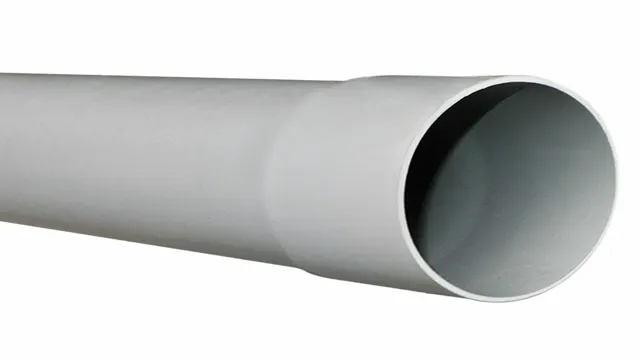
Made from PVC material and is commonly used in plumbing systems
PVC (polyvinyl chloride) If you’ve ever encountered PVC pipes or fittings, you know they’re commonly used in plumbing systems. But what exactly is PVC?
Polyvinyl chloride (PVC) is a synthetic plastic material made from a combination of vinyl chloride and ethylene. This combination creates a material that is strong, durable, and affordable, making it ideal for plumbing systems.
PVC is resistant to corrosion and chemicals, making it an excellent choice for transporting water and other fluids. Additionally, PVC is lightweight and easy to work with, making it popular among plumbers. So, whether you’re installing a new plumbing system or replacing old pipes, PVC is a reliable and cost-effective option.
Used to transport waste and wastewater from toilets, sinks, showers, and other plumbing fixtures to the main sewer line
When it comes to our plumbing systems, the wastewater that we produce must be disposed of correctly for health and environmental reasons. This is where the sewage system comes into play.
Sewage pipes are designed to transport waste and wastewater from toilets, sinks, showers, and other plumbing fixtures to the main sewer line, where it can be treated and disposed of safely.
These pipes are an essential part of a functioning plumbing system and are responsible for keeping our homes and communities clean and hygienic.
Without them, we would be at risk of waterborne diseases and environmental pollution. So, the next time you flush the toilet or wash your dishes, take a moment to appreciate the humble sewage pipes that keep our world running smoothly.
Also used to vent plumbing systems to prevent gas buildup.
One of the lesser-known but crucial functions of a roof vent is to help regulate plumbing systems by preventing the buildup of dangerous gases.
Plumbing systems rely on gravity to move water and other materials through pipes, but air pressure changes can cause blockages or backups. By venting plumbing systems through the roof, these air pressure changes can be regulated to maintain proper flow and prevent gas buildup that can lead to explosions or health hazards.
In addition to maintaining safety, proper venting also ensures that plumbing systems operate efficiently and helps prevent unpleasant odors from permeating throughout a building.
So, the next time you look at a roof vent, remember that its purpose goes beyond just circulating air, and it plays a critical role in keeping buildings safe and functional.
Types of DWV Pipes
If you’re wondering what is a DWV (drain, waste, vent) pipe, it’s a type of plumbing pipe used for draining wastewater and venting gases out of a building. There are three main types of DWV pipes: PVC, ABS, and cast iron.
PVC pipes are the most common and affordable option, known for their durability and resistance to corrosion.
ABS pipes are similar to PVC pipes but have better sound insulation properties. Cast iron pipes are the most durable and long-lasting option but also the most expensive. They are known for their strength and ability to handle high-pressure systems.
When choosing a DWV pipe, consider the size and scope of your plumbing project, as well as the local building codes and regulations. Overall, making educated decisions about your DWV pipes will help ensure a well-functioning plumbing system for years to come.
There are two main types of DWV pipes: Schedule 40 and Schedule 80
When it comes to DWV pipes, there are two main types to choose from: Schedule 40 and Schedule 80. While both are designed for carrying wastewater and other non-pressurized materials, there are some key differences that set them apart.
Schedule 40 pipes are the most common type of DWV pipe and are suitable for most residential and commercial applications.
They are made from PVC and have a thinner wall than Schedule 80 pipes. This makes them lighter and easier to install, but also means they are not as durable. Schedule 40 pipes are typically used for low-pressure applications, such as drain lines, vents, and waste lines.
Schedule 80 pipes, on the other hand, are made from a thicker and stronger PVC material. This makes them more durable and able to withstand higher pressure applications, such as underground water mains and industrial piping.
Schedule 80 pipes are a bit more expensive than Schedule 40 pipes, but they are often worth the investment for their added strength and durability.
Overall, both types of DWV pipes have their benefits and drawbacks, and the choice between them will ultimately depend on the specific needs of your project.
Whether you go with Schedule 40 or Schedule 80, make sure to choose high-quality pipes and have them installed by a professional to ensure the best performance and longevity.
Schedule 40 pipes are more commonly used for residential plumbing applications
When it comes to the plumbing of your home, choosing the right type of DWV pipe is crucial. DWV pipes, or Drain-Waste-Vent pipes, are responsible for carrying wastewater out of your home and ensuring the proper flow of air to prevent gas buildup.
Schedule 40 pipes are more commonly used for residential plumbing applications, while Schedule 80 pipes are typically used for industrial or commercial buildings.
Schedule 40 pipes are made from PVC and are durable enough to stand up to everyday use, making them a great choice for most residential plumbing needs. However, if you have more complex plumbing needs or require a pipe with a higher pressure rating, then Schedule 80 pipes may be a better choice.
Ultimately, the type of DWV pipe you choose will depend on your specific plumbing needs and the recommendations of your plumber. So, if you’re unsure which type of DWV pipe is right for your home, be sure to consult with a professional to ensure that you get the best possible results.
Schedule 80 pipes are thicker and stronger, making them ideal for commercial and industrial plumbing systems
DWV pipes are essential components of any plumbing system, as they are tasked with the critical job of draining waste and wastewater away from homes, commercial buildings, and industrial facilities.
There are different types of DWV pipes, including Schedule 80 pipes, which are thicker and stronger than their counterparts. These sturdy pipes are often used in commercial and industrial environments where heavier loads are expected and where pipes are exposed to rougher conditions.
Schedule 80 pipes can handle more pressure and are less likely to crack or rupture under stress, making them ideal for plumbing systems that require high levels of durability and reliability.
While they may be more expensive than other types of DWV pipes, the benefits of using Schedule 80 pipes in commercial and industrial settings make them a worthwhile investment in the long run.
Installation and Maintenance
If you’re new to plumbing, you might be wondering what a DWV pipe is. DWV stands for “drain-waste-vent,” and these pipes are an essential part of any plumbing system. They’re responsible for transporting wastewater and sewage away from your home and into the main sewage line.
DWV pipes are usually made from PVC or ABS plastic, which makes them lightweight and easy to work with. Installing and maintaining a DWV pipe system involves a few key steps. First, you’ll need to plan your layout and determine the right size and slope for your pipes.
You’ll also need to cut and connect your pipes using the appropriate fittings and glue. Because DWV pipes carry hazardous waste, it’s important to ensure that your system is leak-proof and up to code. Regular maintenance is also crucial to prevent clogs and backups.
Overall, understanding the basics of DWV pipes is an important part of any plumbing project.
DWV pipes should be installed by a licensed plumber
DWV pipes installation requires the expertise of a licensed plumber. While it may seem like a simple task, inexperienced installation or improper maintenance can lead to costly damages like leaks, clogs, and even structural damage.
A licensed plumber has the necessary training to assess your home’s plumbing needs, install the pipes correctly, and ensure proper functionality.
Even if you enjoy DIY projects, it’s best to leave plumbing installations to the professionals. After installation, it’s important to keep up with proper maintenance like regular inspections and cleaning to prevent any issues from arising.
DWV pipes are essential to your home’s plumbing system, so it’s crucial to ensure they are installed and maintained correctly to avoid any potential disasters.
Don’t risk your home’s plumbing system – hire a licensed plumber for DWV pipe installation and maintenance.
Maintenance includes regular cleaning and inspections to prevent clogs and leaks
Installation and maintenance are two crucial aspects of owning any kind of plumbing system. One of the essential steps in ensuring that your plumbing system is functioning optimally is proper installation.
A poorly installed plumbing system can lead to disastrous consequences in the future, including frequent clogs, leaks, and other plumbing issues.
After the successful installation, the next crucial step is proper maintenance. Regular cleaning and inspections are crucial to prevent clogs and leaks. Neglecting maintenance can lead to significant problems and expensive repairs in the future.
It’s better to invest in regular maintenance to avoid major plumbing issues down the line. So, if you want to avoid the trouble of frequent plumbing issues and costly repairs, make sure to invest in professional installation and regular maintenance of your plumbing system.
With the right installation and maintenance, your plumbing system will function smoothly for years.
Conclusion
In conclusion, a DWV pipe is not just any ordinary pipe – it’s like the unsung hero of your plumbing system. It quietly carries away all the waste and water that you flush down the drain, without you even noticing. It’s modest, yet crucial.
So remember, the next time you use the bathroom, take a moment to thank your DWV pipe for doing its job so efficiently. After all, it’s the pipe that keeps on giving, without anybody paying much attention to it. Always remember, a happy DWV pipe makes for a happy home.
DWV pipes are an essential component of plumbing systems that ensure the safe and effective transport of waste and ventilation of gases
DWV pipes, installation, maintenance DWV pipes are an essential component of any plumbing system, responsible for the safe and efficient transportation of wastewater and the ventilation of gases.
When it comes to installation, it’s crucial to work with a licensed plumber to ensure that the pipes are correctly placed and connected. The proper installation of DWV pipes can minimize the risk of leaks, backflows, and other potential hazards.
Regular maintenance is also key to keeping your plumbing system running smoothly. Blocked DWV pipes can cause wastewater to back up into your sinks or showers, leading to plumbing and health issues. To avoid this, it’s important to have your pipes cleaned and inspected regularly.
Maintaining the DWV pipes also ensures that the plumbing system is ventilated correctly, avoiding the buildup of harmful gases like methane.
Neglecting the installation and maintenance of DWV pipes can lead to costly repairs, safety risks, and inconvenience. That’s why it’s essential to leave the installation and maintenance to the professionals, ensuring that your plumbing system runs safely and efficiently.
FAQs on DWV Pipe
What is a DWV pipe made of?
DWV (Drain Waste Vent) pipes are typically made of PVC or ABS plastic materials.
Can a DWV pipe be used for water supply?
DWV pipes are not suitable for use in pressurized water supply systems because they can’t handle the high pressures.
What is the purpose of a DWV system?
The purpose of a DWV system is to remove wastewater from homes or buildings and channel it to the public sewer or septic system.
How do DWV pipes prevent sewer gases from entering a home?
DWV pipes have a P-trap that holds water and creates a barrier to keep sewer gases from entering the home.
Can DWV pipes be used for outdoor drainage?
Yes, DWV pipes can be used for outdoor drainage such as rainwater runoff and French drains.
Are DWV pipes code-compliant in all areas?
DWV pipes must meet local plumbing codes and regulations. It’s important to check with your local building department before installing a DWV system.
How do you prevent DWV pipes from freezing in cold climates?
Proper insulation and location of DWV pipes can help prevent freezing in cold climates. It’s important to consult with a licensed plumber for guidance.

